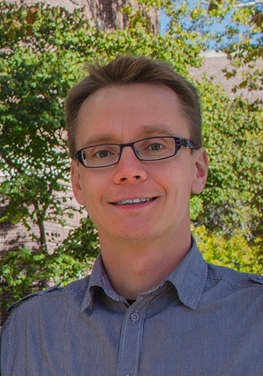


Rapidly advancing high-performance super computers such as \93Blue Waters\94 allow calculating properties of increasingly complex materials with unprecedented accuracy. In order to fully take advantage of leadership-class machines and to accurately describe modern materials, codes need to scale well on hundreds of thousands of processors. This talk focuses on electronic excitations and their ultrafast attosecond dynamics that are notoriously difficult to capture due to the quantum-mechanical electron-electron interaction. Being omnipresent in electronic and optical materials, an accurate description is a crucial factor for computational design of materials for technological applications. It will be outlined how cutting-edge first-principles techniques based on many-body perturbation theory accomplish predictive theoretical spectroscopy of electronic excitations e.g. in transparent conducting oxides. Connecting these results to multi-scale methods is crucial to understand meso-scale structures of these materials with important applications in optoelectronics and photovoltaics. Explicitly studying ultrafast real-time dynamics of electrons and ions is important e.g. for energy harvesting, radiation damage, as well as for a fundamental understanding of its non-adiabatic character. It will be shown how high-performance computational schemes such as Ehrenfest molecular dynamics provide accurate, new insights from first principles.
Such cutting-edge electronic-structure simulations, multi-scale techniques, and high-performance computing are becoming integral tools of the computational materials science community to tackle materials problems of the future.



Rapidly advancing high-performance super computers such as \93Blue Waters\94 allow calculating properties of increasingly complex materials with unprecedented accuracy. In order to fully take advantage of leadership-class machines and to accurately describe modern materials, codes need to scale well on hundreds of thousands of processors. This talk focuses on electronic excitations and their ultrafast attosecond dynamics that are notoriously difficult to capture due to the quantum-mechanical electron-electron interaction. Being omnipresent in electronic and optical materials, an accurate description is a crucial factor for computational design of materials for technological applications. It will be outlined how cutting-edge first-principles techniques based on many-body perturbation theory accomplish predictive theoretical spectroscopy of electronic excitations e.g. in transparent conducting oxides. Connecting these results to multi-scale methods is crucial to understand meso-scale structures of these materials with important applications in optoelectronics and photovoltaics. Explicitly studying ultrafast real-time dynamics of electrons and ions is important e.g. for energy harvesting, radiation damage, as well as for a fundamental understanding of its non-adiabatic character. It will be shown how high-performance computational schemes such as Ehrenfest molecular dynamics provide accurate, new insights from first principles.
Such cutting-edge electronic-structure simulations, multi-scale techniques, and high-performance computing are becoming integral tools of the computational materials science community to tackle materials problems of the future.